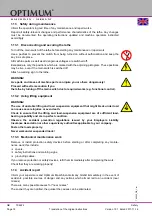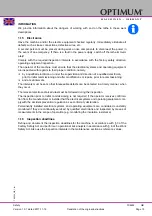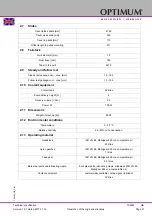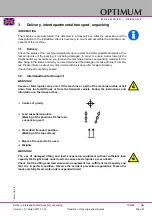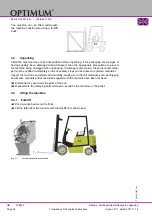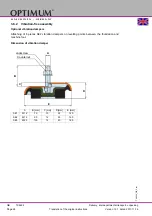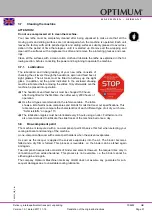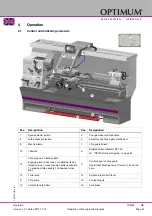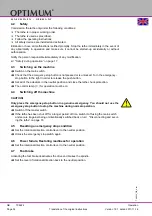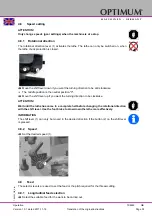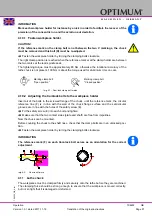
Delivery, interdepartmental transport, unpacking
Version 1.0.1 dated 2017-11-16
Page 31
Translation of the original instructions
TX6222
GB
T
X
6222
_GB
_3.
fm
OPTIMUM
M A S C H I N E N - G E R M A N Y
®
3.7
Cleaning the machine
ATTENTION!
Do not use compressed air to clean the machine.
Your new lathe must be completely cleaned after being unpacked to make sure that all the
moving parts and sliding surfaces are not damaged when the machine is operated. Each unit
leaves the factory with all its polished parts and sliding surfaces suitably greased to avoid oxi-
dation in the period of time that elapses, until it is started up. Remove all the wrapping and
clean all the surfaces with a degreaser to soften and remove the protecting greases and coat-
ings.
Clean all the surfaces with a clean cotton cloth and lubricate the lathe as explained in the fol-
lowing section, before connecting the power and beginning to operate the machine.
3.7.1
Lubrication
The lubrication and initial greasing of your new lathe consists of
checking the oil levels through the headstock, apron and feed box oil
sight glasses. The oil tanks must be filled to half way up the sight
glass. In addition, all the points indicated in the enclosed drawing
must be lubricated before moving the slides. Only afterwards can the
machine be placed into operation.
The headstock and feed box oil must be changed 150 hours
after being filled for the first time, then after every 2000 hours of
operation.
Use the oil types recommended in the reference table . The table
shows a list of well-known companies and brands for oils that meet our specifications. This
table can be used to compare the characteristics of each different type of oil of your choice.
The lubrication nipples must be lubricated every 8 hours using an oiler. Furthermore, it is
also recommended to lubricate the slide tracks of the machine bed once a day.
3.8
One-component paint
The machine is lacquered with a one-component paint. Observe this fact when selecting your
cooling lubricant and cleaning of the machine.
A one-component lacquer with solvent part hardens when the solvent evaporates.
As soon as the lacquer is applied the solvent evaporates into the air. The binder becomes
felted and a dry film is formed. This process is reversible, i.e. the binder can be etched again
and again.
Two-component lacquer also consists of binder and solvent. However, the lacquer dries only in
connection with an added hardener. This process is not reversible, i.e. the binder cannot be
etched again and again.
The company Optimum Maschinen Germany GmbH does not assume any guarantee for sub-
sequent damages due to unsuitable cooling lubricants.


